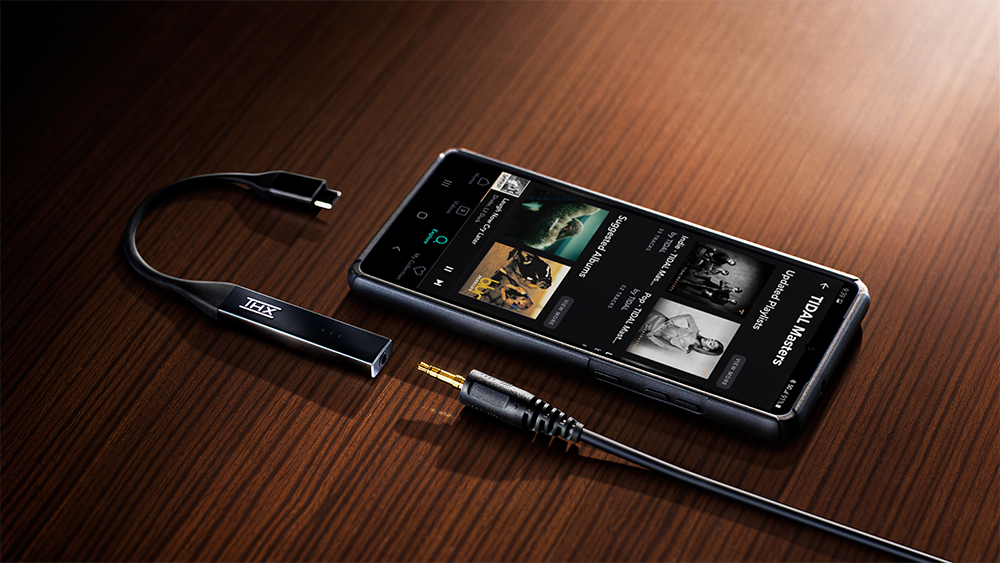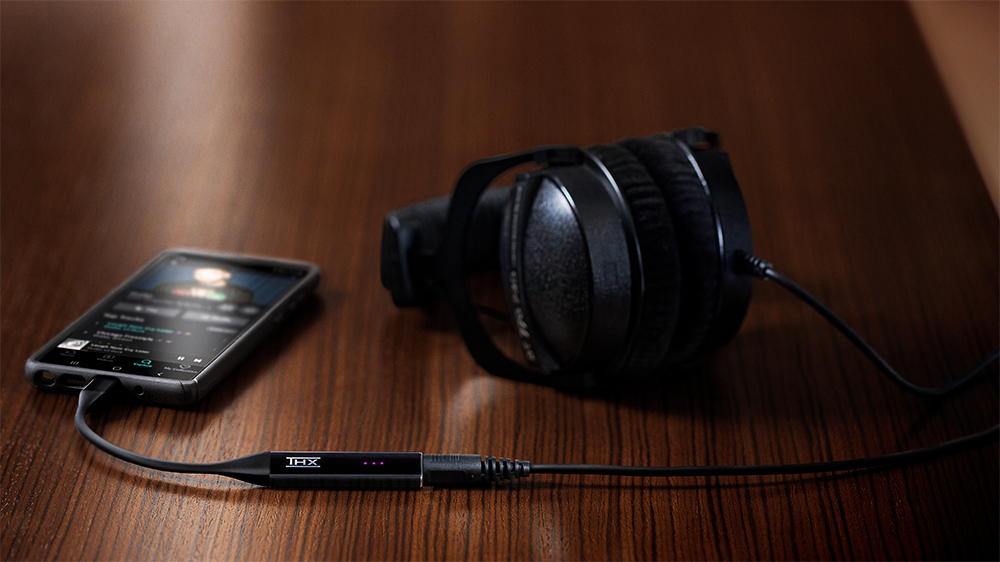THX Onyx is an MQA-supporting USB DAC promising quality music on the go
Welcome to the consumer electronics market, THX

If portable audio has been shaped by anything other than advancing headphones technology in recent years, it's the arrival of portable DACs – pocketable 'middleman' devices that connect between a phone or laptop and a pair of headphones to improve sound quality. We've had laptop-friendly AudioQuest DragonFlys and the more versatile Audiolab M-DAC nano, for example, and now THX (yes, that same firm famously behind cinema audio standards) is entering the consumer electronics market with a similar device.
The all-new THX Onyx ($200, €210, about AU$300) is a dongle designed to enhance the performance between your USB source and your headphones or desktop speakers. You can plug it into any PC, Mac or Android device toting a USB or USB-C port, with iOS devices requiring the slim Apple Lightning to USB Camera Adapter to be compatible. At the other end, the Onyx has been designed to drive all manner of headphones – those with impedances from 22ohms to 600 – via its 3.5mm jack, through which desktop speakers can also be connected.
It's the first DAC of its kind to utilise THX's AAA-78 amplifier technology, which is the highest-powered configuration within the company's Achromatic Audio Amplifier design and promises the same power output as a desktop THX AAA DAC amp – just in a much smaller package. THX says this technology can "reduce harmonic, intermodulation, and crossover distortion by up to 40dB", promising a performance with "infinitesimally low levels" of noise and distortion. It also claims this makes the Onyx up to five times more powerful than other similar USB DACs.
- Our pick of the best DACs 2021: USB, portable and desktop DACs

That AAA technology is bolstered by an ESS ES9281PRO DAC chip, as well as a Master Quality Authenticated (MQA) renderer for playing back MQA hard files and (MQA-encoded) Tidal Masters in their native quality.
The Onyx has an all-metal body, with LED lights to signify the quality of file being played through it – blue denotes 44.1kHz or 48kHz PCM files, yellow signifies sample rates above that, while red and pink display DSD and MQA signals respectively. THX has incorporated cable management into the design so that wires from connected headphones are kept neat and tidy, too.
THX Onyx is now available in the United States and Europe for $200 and €210. Australian pricing and availability are yet to be confirmed, but the price should fall around the AU$300 mark. Needless to say we look forward to taking it for a spin very soon.
MORE:
The latest hi-fi, home cinema and tech news, reviews, buying advice and deals, direct to your inbox.
See all our DAC reviews
Astell & Kern AK USB-C Dual DAC cable promises to boost your portable listening

Becky is a hi-fi, AV and technology journalist, formerly the Managing Editor at What Hi-Fi? and Editor of Australian Hi-Fi and Audio Esoterica magazines. With over twelve years of journalism experience in the hi-fi industry, she has reviewed all manner of audio gear, from budget amplifiers to high-end speakers, and particularly specialises in headphones and head-fi devices.
In her spare time, Becky can often be found running, watching Liverpool FC and horror movies, and hunting for gluten-free cake.
